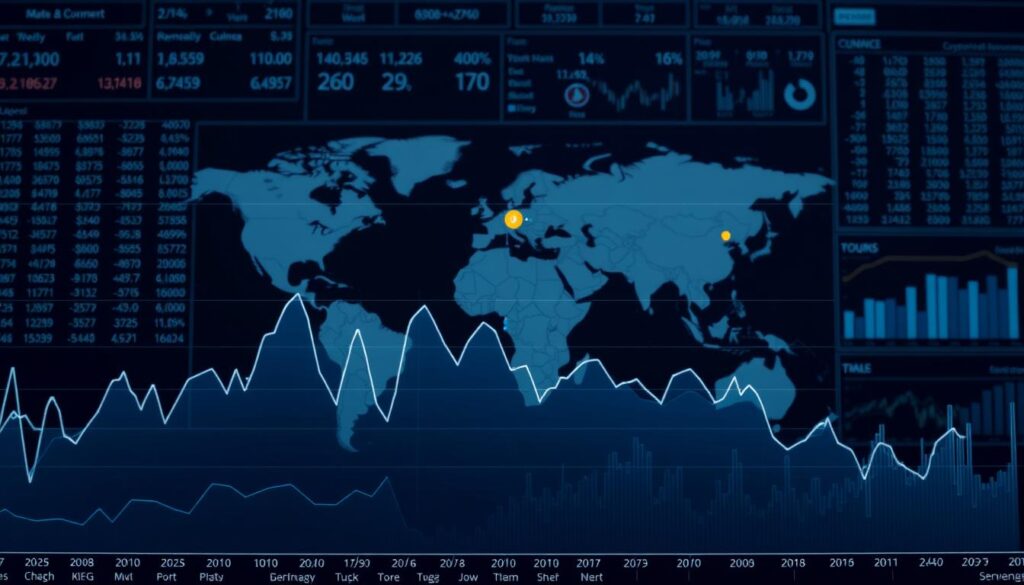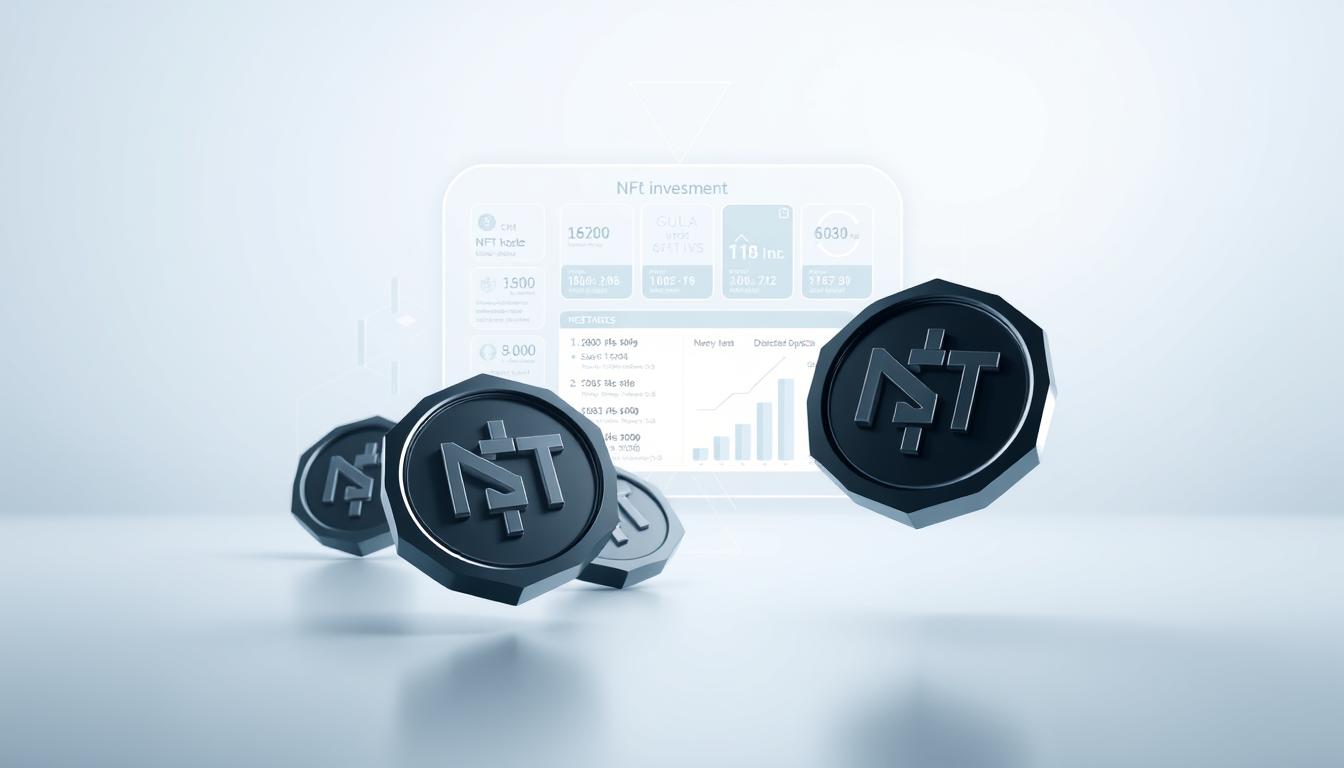Now Reading: Understanding Crypto Market Cap Analysis and Trends Guide
- 01
Understanding Crypto Market Cap Analysis and Trends Guide
Understanding Crypto Market Cap Analysis and Trends Guide

Navigating the complex world of cryptocurrency market capitalization requires strategic insight and comprehensive understanding. Investors seeking to master cryptocurrency market capitalization need a reliable roadmap for analyzing digital asset valuations effectively.
A crypto investment guide becomes crucial in deciphering the intricate dynamics of market valuations. Understanding how digital assets are evaluated provides investors with powerful tools to make informed decisions in a volatile cryptocurrency ecosystem.
The cryptocurrency landscape continues to evolve, making market cap analysis an essential skill for modern investors. By exploring key metrics, trends, and valuation strategies, investors can develop a nuanced approach to cryptocurrency investments.
Key Takeaways
- Cryptocurrency market capitalization represents a critical investment metric
- Market cap helps assess the relative size and potential of digital assets
- Comprehensive analysis requires understanding multiple valuation factors
- Investors can leverage market cap data for strategic decision-making
- Continuous learning is key to mastering crypto investment strategies
What is Cryptocurrency Market Capitalization
Cryptocurrency market capitalization represents a critical metric for understanding the overall value and significance of digital assets in the crypto ecosystem. The crypto market cap calculation provides investors with a comprehensive view of a cryptocurrency’s total worth and market potential.
At its core, market capitalization is determined by multiplying a cryptocurrency’s current price by its total number of coins or tokens in circulation. This straightforward formula helps investors quickly assess the relative size and economic impact of different digital currencies.
Understanding Market Cap Components
The primary components of crypto market cap calculation include:
- Current market price
- Circulating supply of coins
- Total potential supply of tokens
Circulating Supply vs Total Supply
Distinguishing between circulating supply and total supply is crucial for accurate market valuation. Circulating supply represents the number of coins currently available and traded in the market, while total supply indicates the complete number of coins that will ever exist.
Price Impact on Market Valuation
Price fluctuations directly influence market capitalization. A significant change in cryptocurrency prices can rapidly alter the total market value, making it essential for investors to track these dynamic metrics carefully.
Investors should understand that market cap provides a snapshot of a cryptocurrency’s current economic standing, helping them make informed investment decisions in the volatile digital asset landscape.
The Significance of Market Cap in Crypto Investment
Market capitalization plays a critical role in developing a robust crypto investment strategy. Investors use market cap as a fundamental metric to evaluate the potential and stability of digital assets. By understanding market cap importance, traders can make more informed decisions about their cryptocurrency portfolio.
When considering a crypto investment strategy, market cap provides several key insights:
- Risk assessment of different cryptocurrencies
- Relative size and maturity of digital assets
- Potential for growth and market volatility
- Comparative valuation across different blockchain projects
Large-cap cryptocurrencies typically represent more established projects with lower volatility. Bitcoin and Ethereum are prime examples of digital assets with substantial market capitalization. These currencies often demonstrate greater stability compared to smaller, emerging cryptocurrencies.
Investors should not rely solely on market cap when developing their crypto investment strategy. While market cap importance cannot be overstated, it represents just one component of comprehensive investment analysis. Additional factors like technology, team expertise, adoption rates, and market trends must also be considered.
Strategic investors often diversify their portfolios by allocating investments across different market cap ranges. This approach helps balance potential risks and rewards while maintaining exposure to various cryptocurrency segments.
- Small-cap assets: Higher risk, greater potential returns
- Mid-cap assets: Balanced risk-reward profile
- Large-cap assets: Lower risk, more stable performance
Understanding market cap dynamics empowers investors to make calculated decisions in the volatile cryptocurrency landscape. By integrating market cap analysis with comprehensive research, traders can develop more sophisticated and potentially lucrative investment approaches.
Essential Tools for Crypto Market Cap Analysis
Navigating the complex world of cryptocurrency requires powerful crypto analysis tools and market cap tracking platforms. Investors and traders need reliable resources to make informed decisions in the rapidly evolving digital asset landscape.
The digital asset ecosystem offers a range of sophisticated tools designed to provide comprehensive market insights. These platforms enable investors to track performance, analyze trends, and make strategic investment choices.
Popular Market Cap Tracking Platforms
Selecting the right market cap tracking platforms can significantly impact your cryptocurrency investment strategy. Key platforms include:
- CoinMarketCap: A comprehensive global cryptocurrency data tracker
- CoinGecko: Offers detailed market information and research
- CryptoCompare: Provides advanced analytics and price comparisons
Data Visualization Tools
Modern crypto analysis tools leverage advanced data visualization techniques to transform complex market information into understandable graphics. Visual representation helps investors quickly grasp market trends and potential opportunities.
- TradingView: Professional charting and technical analysis platform
- Glassnode: Advanced blockchain and cryptocurrency metrics
- Dune Analytics: Customizable cryptocurrency data dashboards
Real-time Analytics Solutions
Real-time analytics platforms provide instant market cap updates and critical investment insights. These tools help traders make rapid, informed decisions in the volatile cryptocurrency market.
- CoinMetrics: Institutional-grade crypto market intelligence
- Messari: Comprehensive crypto research and data platform
- The Block: Advanced cryptocurrency research and analytics
Crypto Market Cap Analysis and Trends

The cryptocurrency landscape continues to evolve rapidly, with market cap analysis techniques becoming increasingly sophisticated. Investors and analysts are now diving deeper into understanding the nuanced dynamics of crypto market trends.
Key areas of focus in current crypto market trends include:
- Decentralized Finance (DeFi) ecosystem growth
- Non-Fungible Token (NFT) market expansion
- Emerging blockchain technology innovations
- Institutional investment patterns
Market cap analysis techniques have become critical for understanding cryptocurrency valuations. Sophisticated investors now utilize advanced analytical tools to track:
- Real-time price movements
- Network activity metrics
- Trading volume indicators
- Investor sentiment analysis
Digital asset evaluation now requires a multifaceted approach. Tracking crypto market trends involves monitoring not just price, but comprehensive ecosystem developments that impact overall market capitalization.
The most successful crypto investors leverage data-driven insights, combining technical analysis with deep understanding of blockchain technology and market dynamics. This approach allows for more nuanced investment strategies in an increasingly complex digital asset landscape.
Understanding Market Cap Categories
Cryptocurrency market capitalization provides crucial insights into the value and potential of digital assets. Investors use market cap categories to assess risk, growth potential, and investment strategies across different cryptocurrency segments.
The crypto market is typically divided into three primary market cap categories: large-cap cryptocurrencies, mid-cap digital assets, and small-cap crypto. Each category offers unique characteristics and investment opportunities.
Large-Cap Cryptocurrencies: Stability and Reliability
Large-cap cryptocurrencies represent the most established and valuable digital assets in the market. These typically include:
- Bitcoin (BTC)
- Ethereum (ETH)
- Top 10 cryptocurrencies by market value
Investors often view large-cap cryptocurrencies as lower-risk investments with more predictable performance. Their extensive market presence and liquidity make them attractive to conservative investors seeking relative stability.
Mid-Cap Digital Assets: Growth Potential
Mid-cap digital assets occupy a critical space between established and emerging cryptocurrencies. These assets typically:
- Show stronger growth potential
- Demonstrate more volatility
- Offer balanced risk-reward profiles
Small-Cap Crypto: High-Risk, High-Reward Opportunities
Small-cap crypto represents emerging blockchain projects with significant speculative potential. These cryptocurrencies can offer:
- Substantial return possibilities
- Higher investment risks
- Innovative technological approaches
| Category | Market Cap Range | Risk Level | Investment Potential |
|---|---|---|---|
| Large-Cap | $10B+ | Low | Stable Growth |
| Mid-Cap | $1B – $10B | Medium | Moderate Growth |
| Small-Cap | Under $1B | High | High Potential |
Understanding these market cap categories helps investors develop nuanced strategies tailored to their risk tolerance and investment goals.
Market Dominance and Its Impact
Crypto market dominance represents a critical metric for understanding the cryptocurrency ecosystem’s dynamics. At its core, market dominance measures the percentage of total market capitalization controlled by a specific cryptocurrency, with Bitcoin dominance being the most watched indicator in the digital asset landscape.
Investors closely track Bitcoin dominance as a key signal of market sentiment. When Bitcoin dominance rises above 60-65%, it suggests investors are becoming more risk-averse and concentrating their capital in the most established cryptocurrency. Analyzing crypto market dominance trends can provide valuable insights into potential market shifts.
- Bitcoin dominance is calculated by dividing Bitcoin’s market cap by the total cryptocurrency market cap
- High dominance often indicates a defensive investment strategy
- Fluctuations in crypto market dominance can signal emerging investment trends
Historical data reveals fascinating patterns in Bitcoin dominance. During major market cycles, dominance can swing dramatically – from over 80% to less than 40% – reflecting changing investor preferences and market maturity. These shifts are not random but typically correlate with broader economic conditions and cryptocurrency ecosystem developments.
Understanding market dominance helps investors make more informed decisions, providing a nuanced view of cryptocurrency market dynamics beyond simple price movements.
Volume-to-Market Cap Ratio Analysis
Understanding the relationship between crypto trading volume and market capitalization provides crucial insights into market dynamics. Investors and analysts use volume-to-market cap ratio as a powerful analytical tool to gauge the true health and potential of cryptocurrency investments.
Crypto trading volume represents the total number of coins traded within a specific timeframe. This metric helps investors understand market activity and potential price movements. When combined with market capitalization, it offers a comprehensive view of a cryptocurrency’s performance and investor interest.
Trading Volume Indicators
Effective trading volume indicators include:
- 24-hour trading volume
- Average daily trading volume
- Volume compared to market capitalization
- Trading volume across different exchanges
Liquidity Assessment Methods
Liquidity assessment helps investors understand how easily a cryptocurrency can be bought or sold without causing significant price changes. Key methods for evaluating liquidity include:
- Analyzing bid-ask spread
- Measuring order book depth
- Tracking volume trends
- Comparing exchange volumes
Volume Trends Interpretation
Interpreting volume trends requires careful analysis of multiple factors. High trading volume typically indicates strong market interest, while low volume might suggest limited investor engagement or potential market stagnation.
Cryptocurrency investors should continuously monitor volume trends to make informed decisions and identify potential market opportunities or risks.
Global Market Cap Historical Patterns

Exploring the crypto market history reveals fascinating market cap patterns that have shaped digital asset investments. The cryptocurrency landscape has experienced dramatic transformations since Bitcoin’s inception in 2009, with market capitalization reflecting the ecosystem’s volatile nature.
Key historical milestones in crypto market cap development include:
- 2013-2014: First significant Bitcoin price surge and subsequent correction
- 2017: Initial massive crypto bull run with unprecedented market cap growth
- 2020-2021: DeFi and NFT boom driving substantial market expansion
- 2022: Crypto winter demonstrating market cap vulnerability
Analyzing market cap patterns shows recurring cycles of expansion and contraction. Institutional investors increasingly recognize these dynamics, using historical data to understand potential future trends.
| Year | Total Market Cap | Key Developments |
|---|---|---|
| 2013 | $1.5 billion | Early cryptocurrency adoption |
| 2017 | $600 billion | Major Bitcoin price surge |
| 2021 | $3 trillion | Institutional investment peak |
Understanding these crypto market history patterns enables investors to develop more strategic approaches to digital asset investments.
Market Cap in Bull vs Bear Markets
Cryptocurrency markets experience dramatic shifts between bull and bear cycles, with market capitalization serving as a critical indicator of overall market health. Understanding these market dynamics helps investors navigate the volatile crypto landscape more effectively.
The crypto bull market represents a period of sustained growth and optimism. During these phases, market capitalization expands rapidly as investor confidence increases and cryptocurrency valuations surge.
Bull Market Characteristics
- Significant increase in total crypto market cap
- Higher trading volumes across major cryptocurrencies
- Widespread investor enthusiasm
- Rapid price appreciation of digital assets
Bear Market Indicators
Bear market indicators signal a downturn in the crypto ecosystem. These signals help investors identify potential market contractions and adjust their investment strategies accordingly.
- Sustained decline in total market capitalization
- Decreased trading volumes
- Negative sentiment among crypto investors
- Reduced institutional interest
Recognizing early bear market indicators can help investors protect their portfolios during challenging market conditions. Market cap trends provide crucial insights into the overall health of the crypto bull market and potential bear market transitions.
Influence of Stablecoins on Market Cap

Stablecoins have emerged as a critical component in the cryptocurrency ecosystem, dramatically transforming crypto market stability. These digital assets provide a unique bridge between traditional financial systems and the volatile world of cryptocurrencies. With a daily transaction volume around $100 billion, stablecoins are reshaping how digital assets interact with global markets.
The stablecoins impact on market capitalization is profound. They offer investors a safe harbor during market fluctuations, enabling quick transitions between different cryptocurrency positions without converting to traditional fiat currencies. This functionality has significant implications for market liquidity and trading strategies.
- Provide price stability in volatile markets
- Enable faster cryptocurrency transactions
- Reduce transaction costs
- Increase overall market accessibility
Regulatory frameworks are increasingly recognizing the importance of stablecoins. The requirement to maintain reserves backing these digital assets on a one-to-one basis using high-quality liquid assets ensures greater transparency and investor confidence. This approach mitigates potential risks while supporting the continued growth of the cryptocurrency ecosystem.
Investors and traders are increasingly viewing stablecoins as a strategic tool for managing digital asset portfolios. Their ability to maintain consistent value makes them an attractive option for those seeking to minimize risk while participating in the dynamic cryptocurrency market.
Network Value to Transactions Ratio
The Network Value to Transactions (NVT) ratio represents a critical crypto valuation metric that helps investors understand the true economic value of a cryptocurrency. Unlike traditional market capitalization, NVT provides deeper insights into a digital asset’s utility and network performance.
Calculating the NVT ratio involves dividing a cryptocurrency’s total market value by its daily transaction volume. This metric helps investors assess whether a cryptocurrency is overvalued or undervalued based on its actual network usage.
- NVT ratio helps measure network efficiency
- Provides insight beyond market capitalization
- Indicates potential investment opportunities
Investors can interpret NVT ratio results through different lenses. A high ratio might suggest that the cryptocurrency is primarily speculative, while a lower ratio indicates stronger fundamental value and network activity.
| Cryptocurrency | Average NVT Ratio | Network Activity Level |
|---|---|---|
| Bitcoin | 45-65 | High |
| Ethereum | 30-50 | Very High |
| Litecoin | 25-40 | Moderate |
While NVT ratio is a powerful crypto valuation metric, investors should combine it with other analytical tools for comprehensive cryptocurrency assessment. Understanding network dynamics helps make informed investment decisions in the volatile crypto market.
Market Cap Manipulation Risks
The cryptocurrency market presents unique challenges for investors, with crypto market manipulation emerging as a significant threat to financial security. Understanding these risks is crucial for protecting investment portfolios and making informed decisions in the digital asset landscape.

Crypto market manipulation can take various sophisticated forms that unsuspecting investors might not immediately recognize. Criminals leverage multiple strategies to artificially inflate market valuations and deceive potential investors.
Common Manipulation Tactics
- Wash Trading: Artificially creating trading volume by simultaneously buying and selling assets
- Pump-and-Dump Schemes: Artificially inflating cryptocurrency prices through coordinated buying
- Fake News and Social Media Manipulation: Spreading misleading information to influence market sentiment
- Spoofing: Placing large orders with no intention of executing them
Investor Protection Strategies
Developing robust investor protection strategies is essential in mitigating risks associated with crypto market manipulation. Sophisticated investors employ multiple approaches to safeguard their investments.
| Strategy | Description |
|---|---|
| Due Diligence | Comprehensive research on project fundamentals, team background, and technological innovation |
| Volume Analysis | Monitoring trading volumes and identifying unusual patterns |
| Diversification | Spreading investments across multiple cryptocurrency assets |
| Professional Tools | Utilizing advanced analytics platforms for market insights |
Investors must remain vigilant and skeptical, recognizing that crypto market manipulation can significantly impact asset valuations. By implementing comprehensive investor protection strategies, individuals can minimize potential risks and make more informed investment decisions in the volatile cryptocurrency ecosystem.
Emerging Trends in Crypto Market Valuation
The cryptocurrency landscape is rapidly evolving, introducing innovative approaches to crypto valuation trends that go beyond traditional market capitalization. Investors and analysts are now exploring sophisticated market cap alternatives that provide deeper insights into digital asset potential.
Several groundbreaking valuation methods are gaining prominence in the crypto ecosystem:
- Fully Diluted Valuation (FDV): Calculates total market value using all potential tokens
- Total Value Locked (TVL): Measures liquidity within decentralized finance protocols
- Network Value to Transactions (NVT) Ratio: Assesses cryptocurrency network efficiency
Modern crypto valuation strategies now incorporate comprehensive economic metrics that reveal deeper financial dynamics. Token economics has become crucial in understanding a cryptocurrency’s long-term sustainability and growth potential.
| Valuation Method | Key Focus | Investment Insight |
|---|---|---|
| Fully Diluted Valuation | Maximum Token Supply | Future Price Potential |
| Total Value Locked | Protocol Liquidity | Network Strength |
| Network Value to Transactions | Transaction Efficiency | Network Utility |
These emerging crypto valuation trends demonstrate the increasing sophistication of digital asset analysis, offering investors more nuanced perspectives beyond traditional market capitalization metrics.
Impact of Regulatory Changes on Market Cap
Crypto regulations have become a critical factor driving market cap fluctuations in the digital asset landscape. The cryptocurrency ecosystem experiences significant valuation shifts when governments and financial regulators implement new policy frameworks. Investors and market participants closely monitor regulatory announcements from key markets like the United States, European Union, and Asia.
Recent developments in crypto regulations demonstrate substantial impacts on market capitalization. For example, when the Securities and Exchange Commission (SEC) takes a stance on cryptocurrency classification or enforcement, digital asset valuations can rapidly change. These regulatory signals create immediate market reactions, causing substantial market cap fluctuations across different cryptocurrency platforms.
Strategic investors recognize that understanding regulatory trends is crucial for navigating cryptocurrency investments. Countries with clear, supportive regulatory environments tend to attract more institutional capital, which can stabilize and potentially increase market capitalization. Emerging digital asset markets like decentralized finance (DeFi) platforms remain particularly sensitive to regulatory interpretations and potential governmental interventions.
The future of cryptocurrency market valuation will likely depend on balanced regulatory approaches that protect investors while supporting technological innovation. Proactive engagement between blockchain industry leaders and regulatory bodies can help create more predictable market conditions and reduce unexpected market cap disruptions.
FAQ
What exactly is cryptocurrency market capitalization?
Cryptocurrency market capitalization represents the total value of a cryptocurrency calculated by multiplying its current price by the total number of coins in circulation. It provides a quick snapshot of a cryptocurrency’s total market value and relative size within the broader crypto ecosystem.
How do stablecoins impact overall market capitalization?
Stablecoins significantly influence market capitalization by providing liquidity and stability to the cryptocurrency market. They offer a low-volatility alternative that helps investors move funds between different cryptocurrencies without converting to traditional fiat currencies, thereby maintaining consistent market valuation.
What’s the difference between circulating supply and total supply?
Circulating supply refers to the number of coins currently available and traded in the market, while total supply represents the complete number of coins that have been created, including those not yet released or those held in reserve. This distinction is crucial for understanding a cryptocurrency’s true market valuation.
How can investors protect themselves from market cap manipulation?
Investors can protect themselves by conducting thorough due diligence, monitoring trading volumes, checking token distribution, avoiding projects with suspicious price movements, and using reputable cryptocurrency tracking platforms to verify market data and identify potential red flags.
What are the main categories of cryptocurrencies by market cap?
Cryptocurrencies are typically categorized into three market cap segments:
– Large-cap: Over billion (e.g., Bitcoin, Ethereum)
– Mid-cap: Between
FAQ
What exactly is cryptocurrency market capitalization?
Cryptocurrency market capitalization represents the total value of a cryptocurrency calculated by multiplying its current price by the total number of coins in circulation. It provides a quick snapshot of a cryptocurrency’s total market value and relative size within the broader crypto ecosystem.
How do stablecoins impact overall market capitalization?
Stablecoins significantly influence market capitalization by providing liquidity and stability to the cryptocurrency market. They offer a low-volatility alternative that helps investors move funds between different cryptocurrencies without converting to traditional fiat currencies, thereby maintaining consistent market valuation.
What’s the difference between circulating supply and total supply?
Circulating supply refers to the number of coins currently available and traded in the market, while total supply represents the complete number of coins that have been created, including those not yet released or those held in reserve. This distinction is crucial for understanding a cryptocurrency’s true market valuation.
How can investors protect themselves from market cap manipulation?
Investors can protect themselves by conducting thorough due diligence, monitoring trading volumes, checking token distribution, avoiding projects with suspicious price movements, and using reputable cryptocurrency tracking platforms to verify market data and identify potential red flags.
What are the main categories of cryptocurrencies by market cap?
Cryptocurrencies are typically categorized into three market cap segments:
– Large-cap: Over $10 billion (e.g., Bitcoin, Ethereum)
– Mid-cap: Between $1 billion and $10 billion
– Small-cap: Under $1 billion, representing higher risk but potentially higher growth opportunities
How do regulatory changes affect cryptocurrency market capitalization?
Regulatory announcements can cause significant market cap fluctuations. Positive regulatory developments often increase investor confidence and can lead to market cap expansion, while restrictive regulations might cause immediate market cap contraction and reduced investor sentiment.
What tools are recommended for tracking cryptocurrency market capitalization?
Recommended tools include CoinMarketCap, CoinGecko, TradingView, and CryptoCompare. These platforms provide real-time market cap data, historical charts, trading volumes, and comprehensive cryptocurrency market analytics.
How does Bitcoin’s market dominance impact the broader cryptocurrency market?
Bitcoin’s market dominance reflects its percentage of the total cryptocurrency market capitalization. When Bitcoin’s dominance increases, it often indicates investor preference for more established cryptocurrencies during uncertain market conditions, potentially affecting altcoin valuations.
billion and billion
– Small-cap: Under
FAQ
What exactly is cryptocurrency market capitalization?
Cryptocurrency market capitalization represents the total value of a cryptocurrency calculated by multiplying its current price by the total number of coins in circulation. It provides a quick snapshot of a cryptocurrency’s total market value and relative size within the broader crypto ecosystem.
How do stablecoins impact overall market capitalization?
Stablecoins significantly influence market capitalization by providing liquidity and stability to the cryptocurrency market. They offer a low-volatility alternative that helps investors move funds between different cryptocurrencies without converting to traditional fiat currencies, thereby maintaining consistent market valuation.
What’s the difference between circulating supply and total supply?
Circulating supply refers to the number of coins currently available and traded in the market, while total supply represents the complete number of coins that have been created, including those not yet released or those held in reserve. This distinction is crucial for understanding a cryptocurrency’s true market valuation.
How can investors protect themselves from market cap manipulation?
Investors can protect themselves by conducting thorough due diligence, monitoring trading volumes, checking token distribution, avoiding projects with suspicious price movements, and using reputable cryptocurrency tracking platforms to verify market data and identify potential red flags.
What are the main categories of cryptocurrencies by market cap?
Cryptocurrencies are typically categorized into three market cap segments:
– Large-cap: Over $10 billion (e.g., Bitcoin, Ethereum)
– Mid-cap: Between $1 billion and $10 billion
– Small-cap: Under $1 billion, representing higher risk but potentially higher growth opportunities
How do regulatory changes affect cryptocurrency market capitalization?
Regulatory announcements can cause significant market cap fluctuations. Positive regulatory developments often increase investor confidence and can lead to market cap expansion, while restrictive regulations might cause immediate market cap contraction and reduced investor sentiment.
What tools are recommended for tracking cryptocurrency market capitalization?
Recommended tools include CoinMarketCap, CoinGecko, TradingView, and CryptoCompare. These platforms provide real-time market cap data, historical charts, trading volumes, and comprehensive cryptocurrency market analytics.
How does Bitcoin’s market dominance impact the broader cryptocurrency market?
Bitcoin’s market dominance reflects its percentage of the total cryptocurrency market capitalization. When Bitcoin’s dominance increases, it often indicates investor preference for more established cryptocurrencies during uncertain market conditions, potentially affecting altcoin valuations.
billion, representing higher risk but potentially higher growth opportunities
How do regulatory changes affect cryptocurrency market capitalization?
Regulatory announcements can cause significant market cap fluctuations. Positive regulatory developments often increase investor confidence and can lead to market cap expansion, while restrictive regulations might cause immediate market cap contraction and reduced investor sentiment.
What tools are recommended for tracking cryptocurrency market capitalization?
Recommended tools include CoinMarketCap, CoinGecko, TradingView, and CryptoCompare. These platforms provide real-time market cap data, historical charts, trading volumes, and comprehensive cryptocurrency market analytics.
How does Bitcoin’s market dominance impact the broader cryptocurrency market?
Bitcoin’s market dominance reflects its percentage of the total cryptocurrency market capitalization. When Bitcoin’s dominance increases, it often indicates investor preference for more established cryptocurrencies during uncertain market conditions, potentially affecting altcoin valuations.















